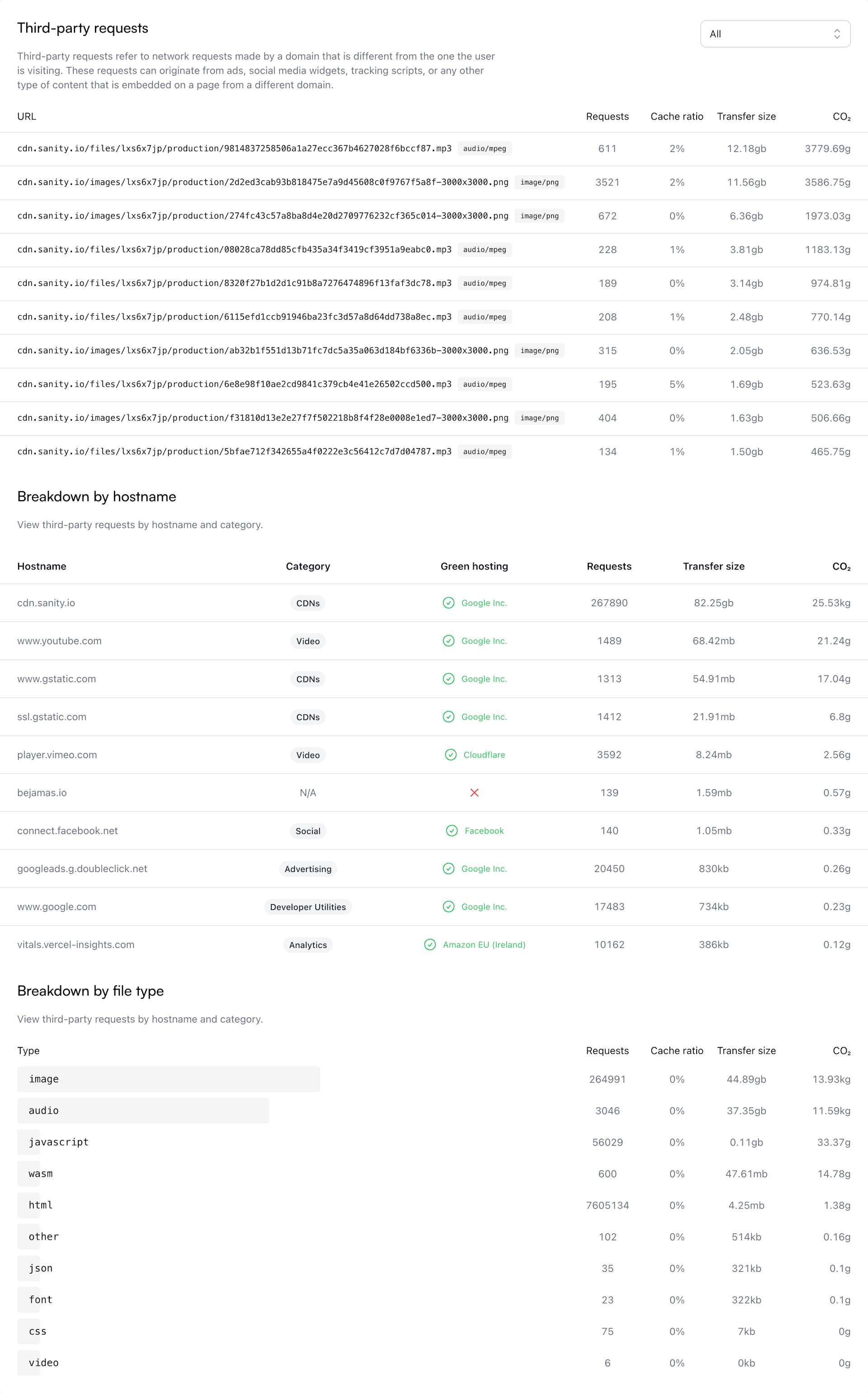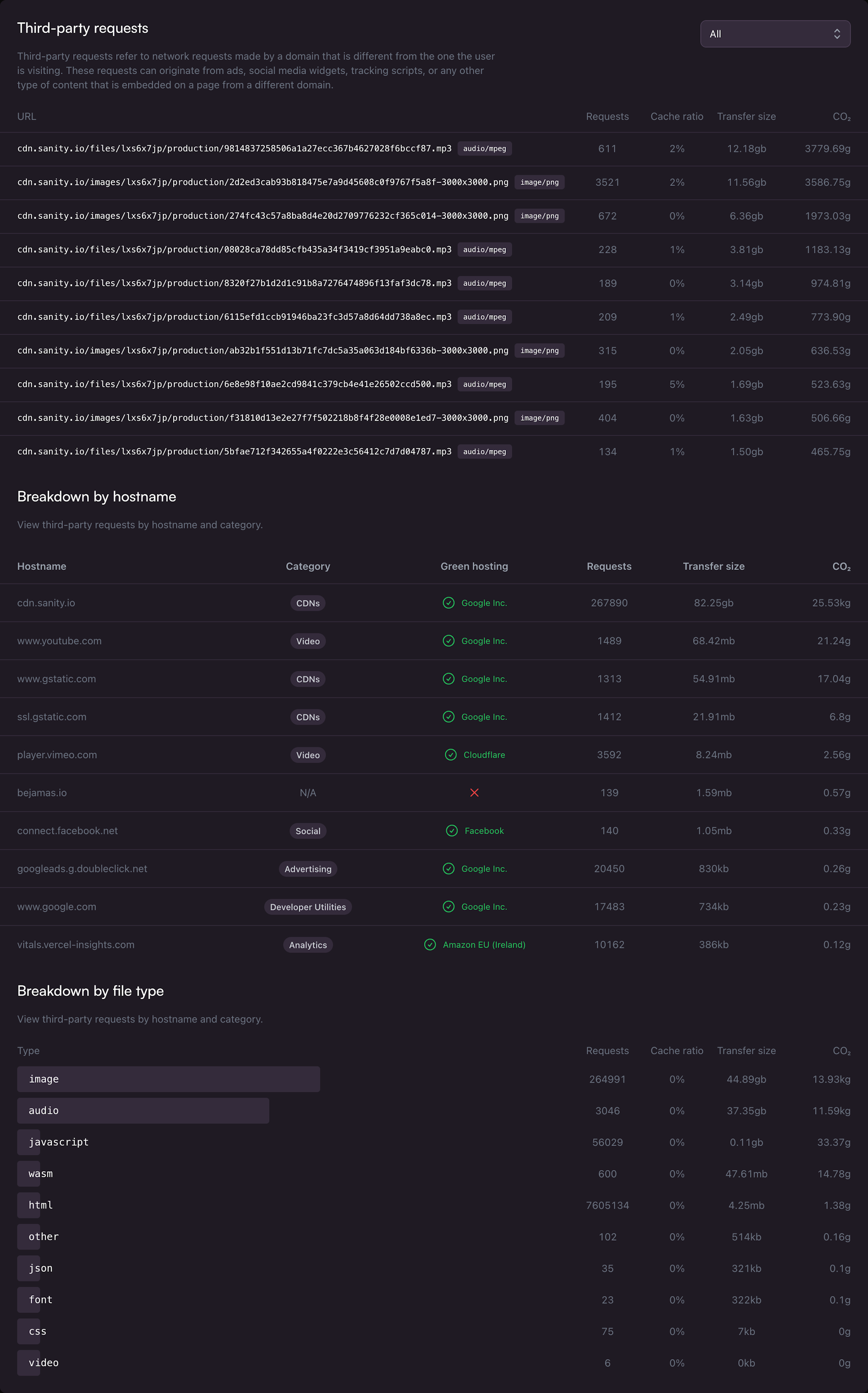Third-party Requests
In the Realtime Carbon Footprint feature, we also provide detailed information about third-party requests made by your website. These are requests for resources hosted on external servers, such as CDNs, analytics services, or video providers. Understanding third-party requests can help you identify the environmental impact of these resources and make more informed decisions about which services to use.


Displayed Information
For each third-party request, we display the following information:
- Resource URL: The URL of the requested resource.
- Resource Type (MIME): The MIME type of the requested resource (e.g., text/html, image/jpeg, application/javascript).
- Total Requests: The total number of requests made for the specific resource.
- Cache Ratio: The percentage of requests served from the local browser cache, indicating the efficiency of your website's caching strategy.
- Transfer Size: The size of the data transferred for the specific resource.
- Carbon Footprint: The estimated carbon footprint of the resource based on the data transferred and the user's country of origin.
Hostnames and Green Hosting
We also provide a table that lists all the hostnames associated with third-party requests made by your website. For each hostname, we display the following information:
- Hostname: The domain name of the third-party service.
- Category: The type of service provided by the hostname (e.g., CDN, Analytics, Video).
- Green Hosting: A checkmark indicates if the third-party service uses green hosting, which means it's powered by renewable energy sources, reducing its environmental impact.
By analyzing both first-party and third-party requests, you can identify opportunities to optimize your website's carbon footprint and make more sustainable choices when selecting third-party services.